Do you have a question about the Cessna 172 Skyhawk and is the answer not in the manual?
Lists essential steps for operating the aircraft safely and efficiently before flight.
Covers steps before entering the aircraft and starting the engine.
Details procedures for starting, take-off, climb, cruise, and let-down.
Covers normal landing, after landing, and securing the aircraft.
Identifies and labels various instruments and controls on the aircraft's instrument panel.
Explains the function and operation of the fuel and electrical systems.
Covers starting, taxiing, take-off, and operational considerations.
Details flap settings, climb speeds, cruise, stalls, spins, and landing techniques.
Addresses cold weather, hot weather, and general flight operations.
Guidelines for handling aircraft and engine emergencies.
Procedures for diagnosing and responding to electrical system malfunctions.
Troubleshooting engine roughness, power loss, and oil pressure issues.
Steps for executing precautionary and emergency landings without engine power.
Covers ditching, cloud disorientation, and spiral dive recovery.
Procedures for handling engine and electrical fires.
Details approved operating conditions, certifications, and maneuver categories.
Lists certificated airspeed limitations and engine operation restrictions.
Explains markings on airspeed, oil, and temperature gauges.
Guides on calculating weight and balance for safe aircraft operation.
Advice on maintaining aircraft performance and dependability.
Procedures for maneuvering on the ground and securing the aircraft.
Instructions for cleaning windshield, paint, and aluminum surfaces.
Guidance on propeller maintenance and interior cleaning.
Procedures for flyable storage and scheduled inspection services.
Lists essential aircraft documents and identification plates.
Daily tasks for fuel, oil, and strainer checks.
Checklist of tasks based on flight hours and time intervals.
Specifies the correct tire pressures for the nose and main wheels.
Instructions for maintaining the nose gear shock strut fluid and pressure.
Introduction to operational data and its use in flight planning.
Data on take-off distances and rate-of-climb performance.
Information on cruise speeds, fuel consumption, and range.
Introduction to optional equipment and their descriptions.
Description of optional long-range fuel tanks and their capacity.
Information on optional equipment for operating in cold weather.
Details ground service plugs, alternate static source, and radio switches.
Explains autopilot, boom microphone, and related controls.
Description and operation of the wing leveler system.
Information on true airspeed indicators and fuel/oil drain kits.
Details optional oil drain valves and carburetor air temperature gauges.
Lists essential steps for operating the aircraft safely and efficiently before flight.
Covers steps before entering the aircraft and starting the engine.
Details procedures for starting, take-off, climb, cruise, and let-down.
Covers normal landing, after landing, and securing the aircraft.
Identifies and labels various instruments and controls on the aircraft's instrument panel.
Explains the function and operation of the fuel and electrical systems.
Covers starting, taxiing, take-off, and operational considerations.
Details flap settings, climb speeds, cruise, stalls, spins, and landing techniques.
Addresses cold weather, hot weather, and general flight operations.
Guidelines for handling aircraft and engine emergencies.
Procedures for diagnosing and responding to electrical system malfunctions.
Troubleshooting engine roughness, power loss, and oil pressure issues.
Steps for executing precautionary and emergency landings without engine power.
Covers ditching, cloud disorientation, and spiral dive recovery.
Procedures for handling engine and electrical fires.
Details approved operating conditions, certifications, and maneuver categories.
Lists certificated airspeed limitations and engine operation restrictions.
Explains markings on airspeed, oil, and temperature gauges.
Guides on calculating weight and balance for safe aircraft operation.
Advice on maintaining aircraft performance and dependability.
Procedures for maneuvering on the ground and securing the aircraft.
Instructions for cleaning windshield, paint, and aluminum surfaces.
Guidance on propeller maintenance and interior cleaning.
Procedures for flyable storage and scheduled inspection services.
Lists essential aircraft documents and identification plates.
Daily tasks for fuel, oil, and strainer checks.
Checklist of tasks based on flight hours and time intervals.
Specifies the correct tire pressures for the nose and main wheels.
Instructions for maintaining the nose gear shock strut fluid and pressure.
Introduction to operational data and its use in flight planning.
Data on take-off distances and rate-of-climb performance.
Information on cruise speeds, fuel consumption, and range.
Introduction to optional equipment and their descriptions.
Description of optional long-range fuel tanks and their capacity.
Information on optional equipment for operating in cold weather.
Details ground service plugs, alternate static source, and radio switches.
Explains autopilot, boom microphone, and related controls.
Description and operation of the wing leveler system.
Information on true airspeed indicators and fuel/oil drain kits.
Details optional oil drain valves and carburetor air temperature gauges.
| Manufacturer | Cessna |
|---|---|
| Model | 172 Skyhawk |
| Crew | 1 |
| Capacity | 3 passengers |
| Engine | Lycoming IO-360-L2A |
| Wingspan | 36 ft 1 in (11.0 m) |
| Length | 27 ft 2 in (8.28 m) |
| Height | 8 ft 11 in (2.72 m) |
| Empty Weight | 1, 691 lb (767 kg) |
| Maximum Takeoff Weight | 2, 450 lb (1, 111 kg) |
| Seating | 4 (including pilot) |
| Type | Light aircraft |
| First flight | June 12, 1955 |
| Number built | Over 44, 000 |
| Horsepower | 160 hp |
| Propeller | McCauley fixed-pitch |
| Fuel Capacity | 56 US gal (212 L) |
| Stall Speed | 48 knots |
| Service Ceiling | 13, 500 ft (4, 115 m) |
| Rate of Climb | 720 ft/min (3.7 m/s) |
| Cruise Speed | 122 knots |
| Range | 696 nmi (801 mi, 1, 289 km) |
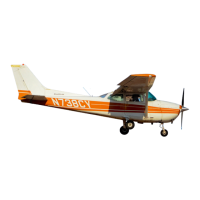
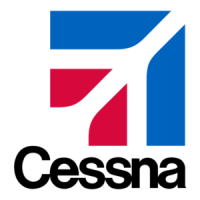
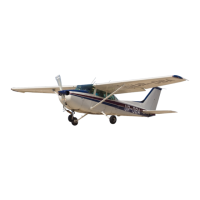
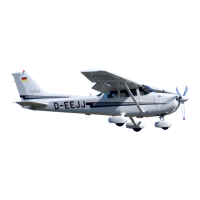
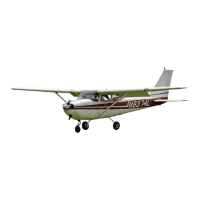


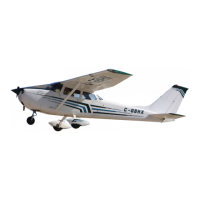

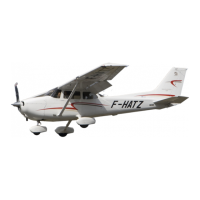

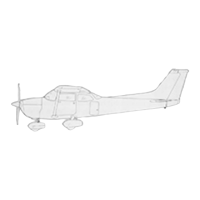
